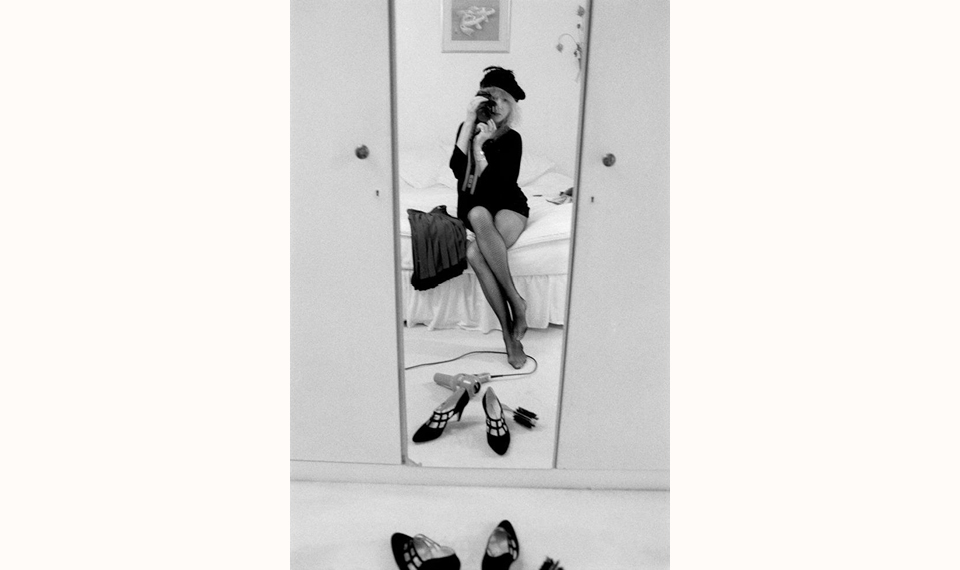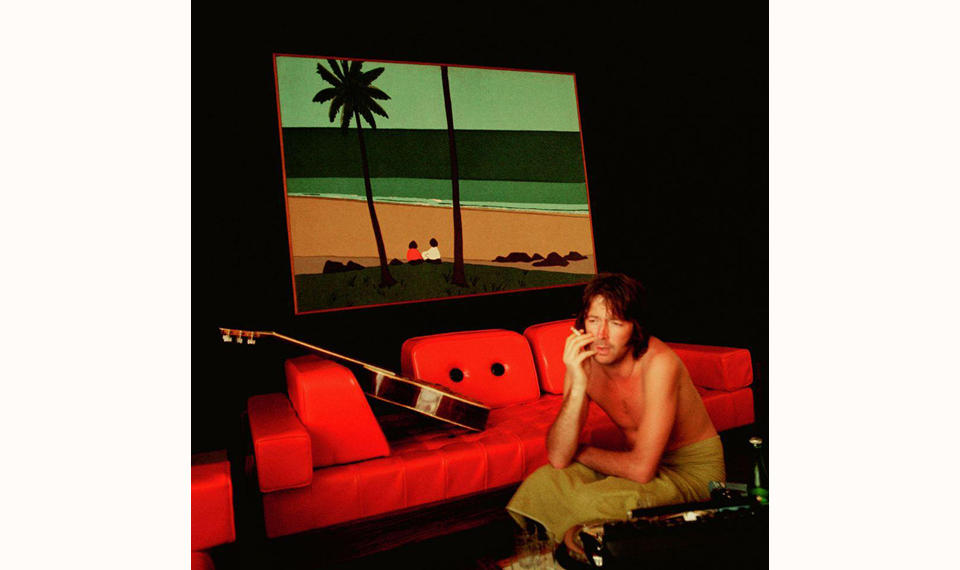Pattie Boyd and The Beauty of Being There
“Something in the way she moves attracts me like no other lover.” George Harrison, The Beatles’ lead guitarist, wrote “Something” about the British model Pattie Boyd. That song, from the band’s 1969 Abbey Road album, is considered one of the greatest love songs ever written—even Frank Sinatra, who covered the song, said as much. Harrison and Boyd wed earlier in ‘66 and the marriage officially lasted over 10 years. Harrison’s close friend, the guitarist, singer and songwriter Eric Clapton, already obsessed with Boyd, wrote the 1971 smash hit “Layla” as well as the 1977 classic “Wonderful Tonight” about her—Boyd married Clapton in 1979. That marriage ended in 1989 and the mythical tangle of lovers became part of the Pattie Boyd legend.
Throughout the whirlwind that was Beatlemania, the swinging London scene of the 1960s, the band’s spiritual retreat to India and the madness of 1970s Rock, Pattie Boyd was the muse, wife and source of inspiration for two of the era’s greatest artists. Her influence on Rock ’n’ Roll can never be overstated.
Boyd’s latest book of photographs, My Life in Pictures, is a dreamscape of imagery, a story of love and loss and beauty—it’s about being there—and with camera in hand, Pattie Boyd documented history while mastering the art of photo opportunity.
I recently talked to Pattie about her new book, including her incredibly intimate photographs on display this April and May in the lobby of The Roxy Hotel. Here’s what she had to say.
Richard Boch: Hi Pattie. I’ve been so looking forward to this interview after seeing the photos included in My Life in Pictures. There’s one in particular that took and continues to take my breath away. Let’s get to that picture in just a bit—but first, tell me what you were thinking when you found yourself bearing witness to the history being made in the mid-1960s. Did you think I need to grab my camera or had taking pictures already become a casual way for you to express the realization of what was happening around you?
Pattie Boyd: I realized we were living in an amazing time in every way—socially, creatively and culturally. There was definitely a shift with one generation moving further away from the last. I didn’t take photos in a journalistic way; I only took photos of my friends and surroundings. I was happy-go-lucky, with no thought of capturing the moment for any historical document.

RB: Your modeling career, which was major, along with being cast in the Beatles’ 1964 film, A Hard Day’s Night, put you in the middle of a worldwide music scene like no other before or since. Meeting George Harrison and the band gave you remarkable, insider—right place-right time—access to say the least. What motivated you to shoot your first photos? Did the camera provide you with a prop or a level of comfort the way a cocktail or cigarette might? Did you ever have a sense of being on a mission to record it all?
PB: No, I didn’t feel obliged to record my surroundings. I started taking photos while I was modeling—getting lessons from photographers, and then photographing friends who were models or actresses as they needed more pics. It was good practice for me and holding a camera can be a hazard as well as a prop—not everyone wants to be photographed, so I felt I had to be sensitive to the situation.
RB: I’m sure that your sensitivity was both an asset and a comfort, whether the shots were candid or set up. What was the response among those closest to you when you were taking photos? Was there any sense of dismissal or what’s she doing from your friends? Despite having a connection with those around you, were you ever intimidated?
PB: Occasionally I felt intimidated so I would put the camera down, but with time and a growing sense of confidence I captured so many lovely scenes. If I didn’t like how an image turned out I would destroy the negative—much to some people’s horror!

RB: Horrors! That’s rather funny but I’m sure it’s so true! Thankfully there are a number of photos in the book and several in the show at The Roxy that really go beyond candid and depict a grittier sense of time, place and mood. The photo of Cream and the shot of Eric and George definitely come to mind—because only you could have taken those photos. Did you ever think these very personal images would become such a big part of your legacy and such an amazing gift to both history and culture?
PB: I had absolutely no idea that any of my photographs would be seen by anyone but me and any friends who might be interested. I was utterly amazed when I had my first exhibition in America that there would be any interest. It was overwhelming.

RB: There’s one particular photo I alluded to earlier—an image that made me gasp, shake my head, smile and even shed a tear. It’s the 1968 self-portrait of you, George and a blooming wall of roses. The image is both of the time yet timeless in a way the two of you look like kids hanging out today. The image really looks like now; like youth-eternal, and that is such a beautiful thing. What did this photo mean to you then and how does it make you feel today?
PB: I wanted to capture the beautiful roses that at last decided to bloom. George was hanging around so I asked him to pose with me in front of them. Setting up the tripod I placed him there and set the timer. Well, it took so long to click that George, obviously bored or thinking of a new song, looked away. I like it not being as perfect as I wanted—the shot is far more interesting with him not looking into the lens.
RB: Pattie, I really love that someone is able to say, “George was hanging around…” and coming from you it’s perfect. And now, here we are, celebrating your life with this gorgeous book along with an exhibition featuring a number of the book’s stunning images. I can only imagine with everything that’s gone on, including your Cocktails with Pattie podcasts, your 2008 bestselling memoir Wonderful Tonight: George Harrison, Eric Clapton and Me—and your willingness to share My Life in Pictures with us all—it truly is a story that no one, even you, could have ever imagined—or could you?
PB: No, I couldn’t in a million years have imagined the life I have had—isn’t life so wonderful? We just never know what is around the corner, especially when you keep your eyes open.

RB: Pattie, thanks so much for taking the time to do this interview. It’s really been such a treat to look through the images and, in a personal way, to revisit the music. I look forward to the exhibition at The Roxy Hotel and I very much look forward to seeing you in NYC.
PB: Richard, thank you for asking interesting questions. I’m so looking forward to meeting you and being in New York after many years—please let it be warm, tis so cold here in England.
Pattie Boyd’s photographs are on display at The Roxy Hotel from April 6 through May 31, in collaboration with Morrison Hotel Gallery.
INTERVIEW Richard Boch
FEATURED IMAGE George Harrison and Pattie Boyd, England 1968. Photograph by Pattie Boyd courtesy of Morrison Hotel Gallery
Richard Boch writes GrandLife’s New York Stories column and is the author of The Mudd Club, a memoir recounting his time as doorman at the legendary New York nightspot, which doubled as a clubhouse for the likes of Jean-Michel Basquiat, Keith Haring, Debbie Harry and Talking Heads among others. To hear about Richard’s favorite New York spots for art, books, drinks, and more, read his Locals interview—here.








